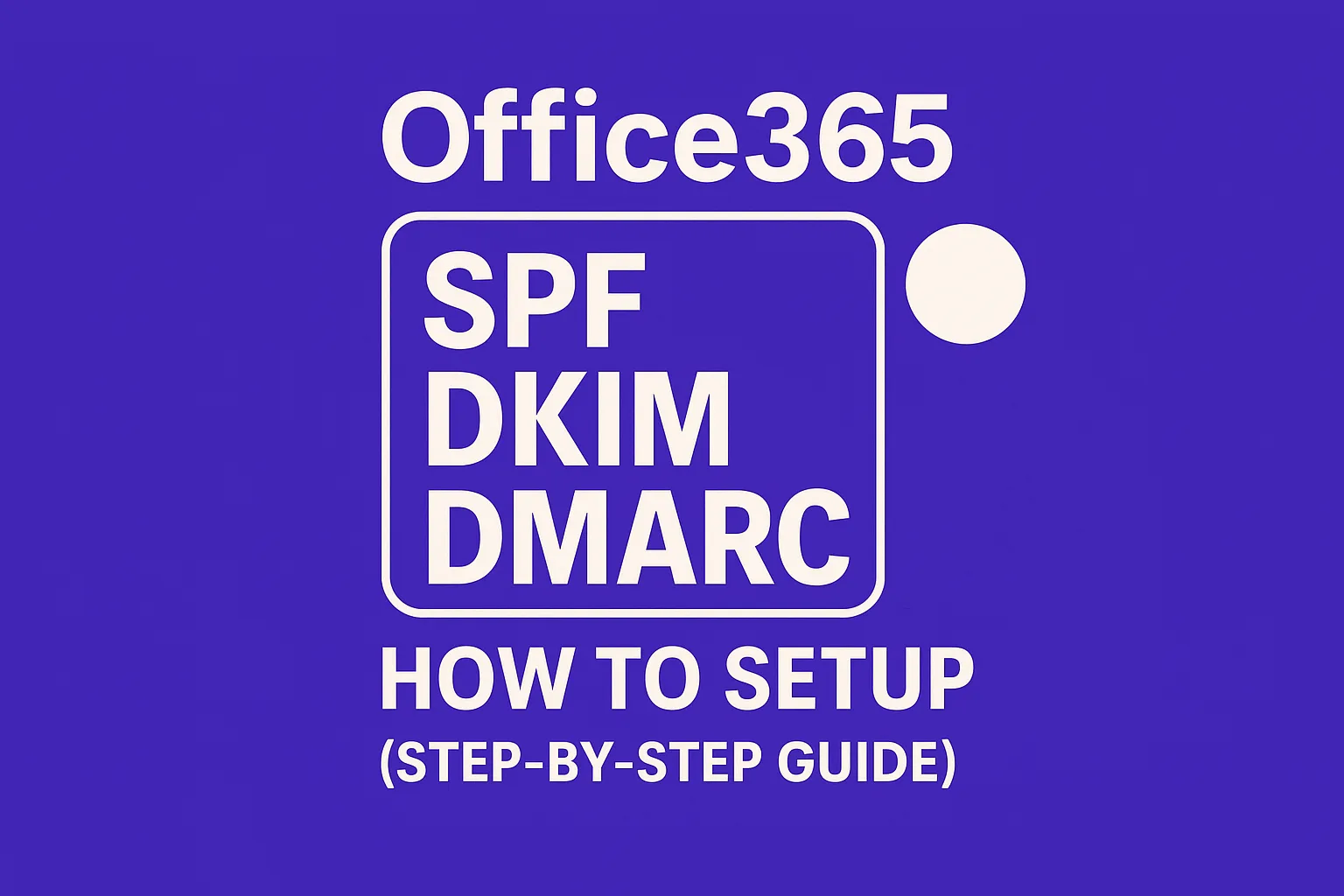What Is Email Deliverability?
Email deliverability is your ability to land messages directly in recipients’ inboxes. While delivery means a server accepted your email, deliverability goes further, it determines whether your emails are actually seen by recipients. Inbox placement is influenced by mailbox providers and their filtering systems.
Why Deliverability Matters in 2025
Mailbox providers continue to raise their standards, requiring a clearly established identity, well-maintained email lists, and adherence to respectful email practices. Failing to meet these standards can result in emails being routed to Spam, or blocked altogether.
- Authentication is now a fundamental requirement, not a bonus.
- Your domain’s reputation affects all campaigns and tools connected to it.
- Filtering systems monitor sending patterns and complaint spikes in real time.
- Engagement signals remain important, though not necessarily in the ways most expect.
You don’t need shortcuts or tricks. Instead, focus on consistent, verifiable sender behavior to achieve strong deliverability.
How Mailbox Providers Decide Where Your Email Lands
Filters assess a variety of signals together, no single factor determines your fate. Below are key areas you can directly influence:
- Identity: Implement proper SPF, DKIM, and DMARC with alignment between your sending and visible domains.
- Reputation: Minimize complaint rates, avoid unknown users, steer clear of spam traps, and address past incidents.
- Consistency: Maintain predictable sending volumes, steady cadences, and sensible ramp-up strategies.
- List quality: Achieve few bounces, regularly update your list, and swiftly remove bad addresses.
- Recipient actions: Encourage replies, mark your emails as “not spam,” prompt users to move emails out of Spam, and monitor filing behaviors.
- Infrastructure: Ensure correct rDNS, use TLS, and operate with a clean sending path.
While excellent content helps, poor sender reputation will override even the best-written emails every time.
Core Technical Foundations: SPF, DKIM, and DMARC
Authentication provides proof of identity. SPF specifies which servers are permitted to send emails for your domain. DKIM attaches a cryptographic signature to verify message integrity. DMARC unifies these elements and enables you to set a policy for handling authentication failures.
If these acronyms seem complex, you may want to begin with a straightforward overview or explanation. This simple explanation of SPF, DKIM, and DMARC breaks down what each part does and why it matters.
Once these systems are configured, maintain alignment, send emails from the same organizational domain that appears to recipients. Proper alignment reduces impersonation risks and makes filters less suspicious.
Sender Reputation: Domain, IP, and Activity Signals
Today, your domain reputation has a greater impact than the reputation of your sending IP address. Brand new domains are untested; age, proven stability, and consistent patterns build trust over time. However, a problematic IP address can still hold you back, and a new sending IP requires careful warming up.
Filtering systems also weigh the activity your emails receive. Positive actions like replies you get while warming-up your mailbox and being marked as “not spam” help your standing. Meanwhile, spam complaints and hard bounces can quickly harm your reputation. Treat every campaign as a test of your trustworthiness.
Warm-Up and Ongoing Positive Activity
Warming up isn’t just a short burst of sending larger volumes. You need to demonstrate consistent, positive recipient interactions, activity that resembles authentic email usage. At this point, interactions with the mailbox become crucial.
Emails sent during the warm-up period are intended to generate consistent, positive activity, which spam filters can gradually recognize. This technical process supports the growth of your sender reputation; it’s not intended for marketing purposes. Warm-up emails exist purely to foster reliable sender activity, which is observed and ranked by filters over time.
How I Run Warm-Up Without Guesswork
- Begin with a verified domain and correctly configured authentication.
- Increase sending volume in small, steady increments, never with sudden spikes.
- Ensure Mailwarm activity continues in the background every day.
- Delay sending to large segments until complaints and bounce rates are under control.
- Maintain a consistent sending schedule and do not alter envelope settings abruptly.
I am patient during this warm-up stage. Rushing this process typically results in deliverability issues and more mails landing in Spam in the long run.
List Hygiene and Permission Signals
Maintaining a clean list is fundamental to deliverability. Filters can easily distinguish a healthy list from a neglected one based on bounces, traps, and a lack of engagement.
- Immediately remove all hard bounces from your active list.
- Suppress email addresses after multiple soft bounces.
- Retire contacts that never engage over an extended period.
- Be cautious with role accounts and addresses from risky domains.
- Honor unsubscribe requests promptly and without friction.
Well-maintained lists demonstrate that you respect recipients and their inboxes, an important signal that can improve inbox placement over time.
Testing, Monitoring, and Troubleshooting
You cannot address problems you don’t see. Regularly monitoring deliverability signals empowers you to act quickly when issues arise.
- Before a send: Confirm DNS health, DMARC alignment, and the status of your sending domain.
- During a send: Watch out for unusual bounce rates and provider-specific blocks.
- After a send: Review complaint reports and recipient interactions, where this data is available.
If you encounter spam blocks or placement issues, slow your sending pace. Narrow your focus to your healthiest lists, reduce volume, and allow time for reputation recovery. Keep your warm-up activity running behind the scenes as you make adjustments.
Common Myths to Drop in 2025
- There’s a common misconception that good content alone can guarantee email deliverability. In reality, your sender reputation carries more weight, especially when facing tough filters.
- Another myth is that the warm-up period ends after a week. Ongoing, reliable activity is needed indefinitely to sustain strong deliverability.
- Some believe that new domains can perform well at scale immediately. In fact, new domains require time and consistent behavior to gain trust.
- It’s also incorrect to think that success with one provider predicts results everywhere. Every provider operates its own distinct filtering models and rules.
- Switching to a new sending platform does not reset your sender reputation. Your domain reputation follows you, regardless of which tool you use.
A Practical 30-Day Deliverability Plan
- Days 1–5: Configure and verify SPF, DKIM, and DMARC. Address rDNS and TLS issues. Initiate Mailwarm activity.
- Days 6–10: Begin with small, highly engaged segments. Keep sending volumes low and steady.
- Days 11–15: Gradually expand your audience. Remove any address that triggers a bounce.
- Days 16–20: Introduce one new campaign. Closely monitor complaints at each provider.
- Days 21–25: If you observe blocks or placement in Spam, pause your volume growth and let your reputation recover.
- Days 26–30: Increase your sending by another step. Maintain daily Mailwarm engagement in the background.
This plan maintains its simplicity for a reason, deliberate consistency outperforms aggressive, rapid increases every time.
Compliance and Respect: The Quiet Advantage
Having a clear identity, genuine routing, and fast unsubscribe options are more than just best practices, they represent respect for your recipients. Mailbox providers recognize and reward senders who make things seamless for users, often resulting in more reliable inbox placement.
Make sure to document your processes. Record consent sources and track changes to your DNS settings. When deliverability issues occur, having a clear history speeds up the resolution process.
Bringing It All Together
In 2025, inbox placement will reward those who send calmly and consistently. Focus on clarifying your identity, keeping your list fresh, and generating steady positive activity. Use ongoing warm-up to maintain strong signals, and always keep it operating in the background.
Think long term. The inbox remembers.
If you’d like professional guidance on your configuration, I recommend seeking a review from independent email deliverability specialists at MailAdept. A short expert assessment now can help you avoid weeks of deliverability headaches later.
FAQ
What is email deliverability?
Email deliverability refers to the ability of your emails to reach recipients' inboxes rather than ending up in spam or not being delivered at all. It's more about the strategic placement of emails in the inbox as opposed to just being technically delivered.
Why is email deliverability important?
Email deliverability is crucial because even if an email is delivered, it may not be seen if it lands in the spam folder. High deliverability ensures that your messages reach the intended audience, potentially increasing engagement and effectiveness.
What factors affect email deliverability?
Several factors can impact email deliverability, including sender reputation, list quality, email content, and recipients' engagement. Authentication protocols such as SPF, DKIM, and DMARC, as well as avoiding spam traps, also play vital roles.
How can I improve my sender reputation?
To improve sender reputation, ensure your domain and IP address are established and not flagged for spam. Maintain a clean email list by removing inactive or bouncing addresses and encourage recipient interactions like marking emails as 'not spam.'
What is an email warm-up, and why is it necessary?
Email warm-up is the process of gradually increasing your sending volume over time to establish a reputation as a trustworthy sender. It helps reduce spam complaints and improve deliverability by showing consistent, positive recipient engagement.
Why is list hygiene important for email deliverability?
List hygiene is critical because a neglected list can lead to higher bounce rates and spam complaints, both of which harm deliverability. Regularly cleaning your list ensures you're sending emails to engaged and legitimate addresses, improving overall performance.
What are the main authentication protocols for emails?
The principal authentication protocols for emails are SPF, DKIM, and DMARC. These protocols help verify that the sender is legitimate and that the message has not been altered during transit, which boosts trust and deliverability.
How do engagement signals affect email deliverability?
Engagement signals such as open rates, replies, and actions like moving emails from spam to the inbox can significantly impact deliverability. Positive interactions with your emails suggest to providers that recipients find them valuable, improving inbox placement.









